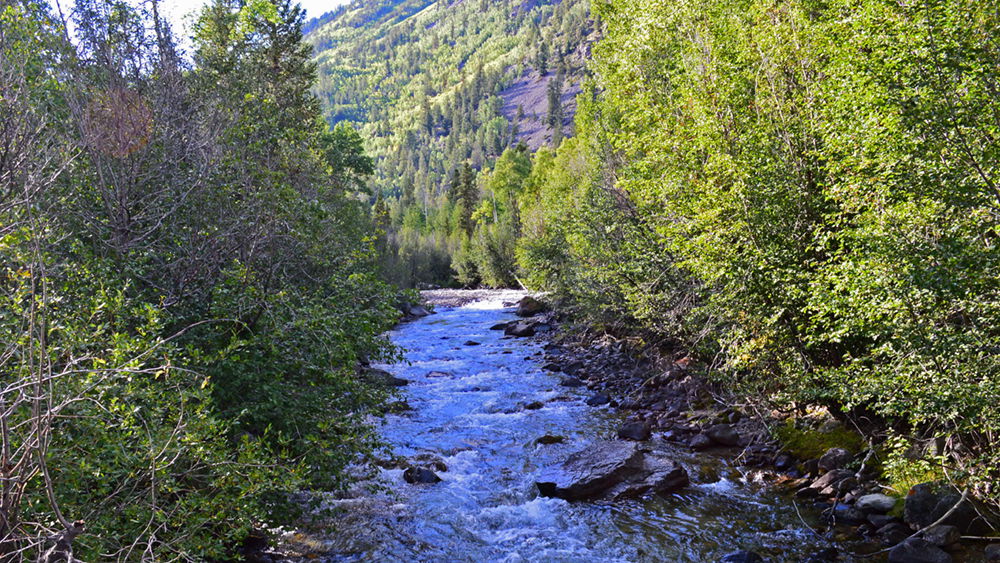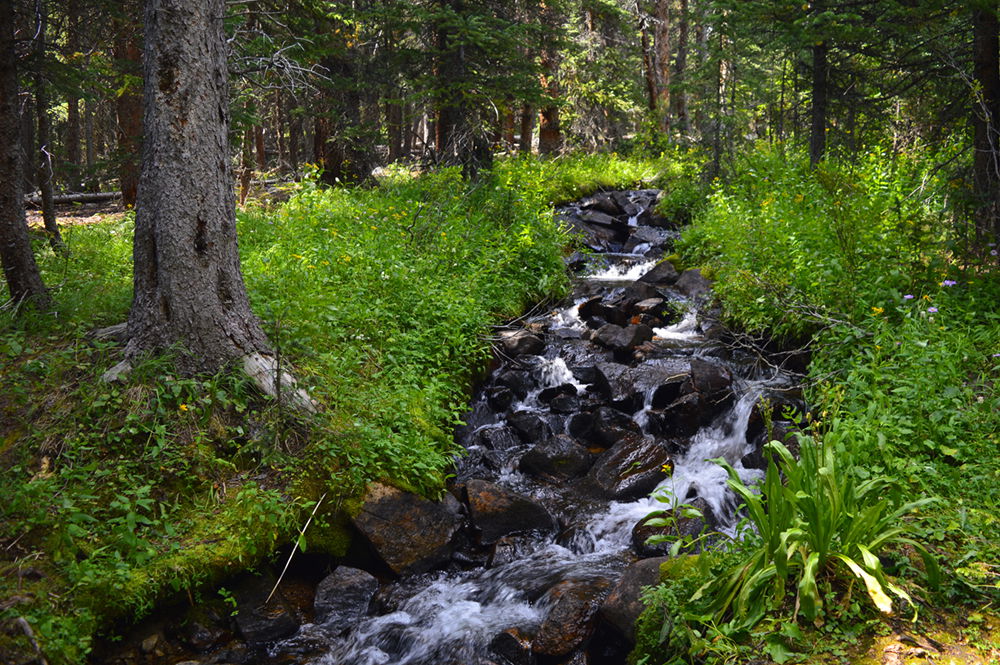Good Enough Water - Water Treatment in the Backcountry
Sometimes I have a problem with “good enough”.
It’s not good enough for me to put glasses in the cupboard; they need to be arranged in a way that makes sense. Common ones need to be grouped together, and they need to be arranged from tallest to shortest.
It’s not good enough for me to put bills in my wallet; they need to all face the same direction. They need to be arranged from largest denomination to smallest.
If I’m 5 minutes early for a meeting, I’m on time. If I arrive when the meeting is supposed to start, I’m late.
It’s a code I live by. It’s what makes me comfortable. And I suppose people who study these things would say this code makes me feel safe.
I don’t expect other people to live by the same code. If I see your messy cupboards or your money is in disarray or you are chronically late for meetings, I don’t care. It’s the way you are. I’ll start the meeting on time and I’m not rearranging your cupboards.

What about filtering water from a creek when I’m hiking? Is it good enough to use any filter? Is it good enough to use the same type of filter everyone else is using?
I had to decide what filter I was going to use while I’m out hiking. In the process I wondered if filtered water was good enough. I ended up choosing to not just filter my water, but to purify it as well. It seems filtered water is one of those good enough things. But, of course, I have a problem with that.
Before anyone gets all uptight about me judging, understand that the rules haven’t changed. I don’t care if you filter or purify your water. What you put in your body has little consequence to me. So, if you’ve done your homework and you’re happy with your filter, thumbs up from me! Hike on!
However, if you don’t know the difference between filtered and purified water and you think it may be worth knowing, then I have a few things that may interest you.
First, let’s talk about the difference between filtered and purified water.
Filters remove particulates from the water in a way that makes the water look clean. Many backpacking water filters are rated high enough to remove dangerous bacteria. So, that’s good (enough?). A handkerchief is a type of filter; it’ll remove some particles from the water. The popular Sawyer Squeeze is another type of filter; it will remove bacteria quite well.
Purifiers are more effective. They remove very tiny particles to include all bacteria AND most viruses. The MSR Guardian and the Aquamira Frontier Max are purifiers. There are also chemical tablets that can purify water, like chlorine and iodine.
Long distance hikers would typically choose a filter over a purifier because
- they typically weigh less,
- the odds of drinking filtered back-country water that will make you sick are low, and
- the dangerous things purifiers remove are not typically found in backcountry water.
That’s fair; it’s a reasonable risk to take. But what do the experts say?
The Center for Disease Control (CDC) put out some great information on water treatment in the backcountry. They list some of the more common pathogens found in backcountry water. We’re talking about cryptosporidium, giardia, salmonella, e. coli, enterovirus, hepatitis A, etc. Eliminating these pathogens is what will make water safe to drink.

The bad pathogens found in backcountry water normally come from human and animal fecal waste. So, bury your stuff at least 8 inches deep and at least 200 feet away from water sources. Animals don’t dig cat holes and you won’t find them pacing any specific distance from the creek before they relieve themselves. And so it’s reasonable to believe dangerous pathogens from animal feces finding their way to your water source is a real possibility in the backcountry.
Backcountry bacteria can be as small as .2 microns. Viruses, on the other hand, are about 100 times smaller than bacteria (.004 to .1 microns). If a person could remove microbes from the water that were .1 microns or smaller you would begin to step into the world of truly safe water.
The Water Quality Association tells us that a combination of both chemical and physical methods of disinfecting water can eliminate up to 99.9999% of microorganisms. Chemical disinfection includes chlorine, iodine, bromine, and ozone. Physical methods include filters, ultraviolet light, and distillation. The CDC agrees with these findings.
Symptoms of taking in bad water could be delayed up to a couple days and it can last weeks, which can be dangerous enough to require medical help. These symptoms include:
- Fatigue
- Dehydration
- Messy stools - diarrhea
- Abdominal cramps
- Confusion
- Lack of appetite
- Weight loss
- Fever
- Vomiting
- Flu-like symptoms
There are many contributing factors to how effective filtration and purification methods and systems can be. These include temperature, treatment method and duration, density of the contaminates, application of purification methods, cross contamination potential, the immune system of the recipient, etc. But there are certain steps we can take to minimize the likelihood of getting the crud in the wild due to bad water. Here are a few tips:
Understand the environment. If you are hiking where there are herds of cattle or a dense population of wildlife, you will have an increased potential for contaminated water in the environment. You’ll need to plan your water treatment methods accordingly.
Understand the capability of your treatment method. Know the effective rating of the filter or the purification system you are using and square that against the environmental conditions. If your method does not exceed what the environment may introduce, you should step it up to a more effective method.
Plan for worst case. Carry a filter and chemical/UV option. If your filter fails, you have a backup. Or you can do both types of treatments to be extra careful.
I’ve listed below a few of the more common water treatment systems commonly used in the backcountry. I hope you find this list helpful in your decision making. And I hope what you choose is at least good enough.
System | Type | Micron Rating | Weight |
Filter | .2 microns - Filters "probably" most backcountry bacteria, not effective for backcountry viruses | 2 oz | |
UV purifier | If applied according to the instructions the device manages a satisfactory inactivation of bacteria. See article. | 4.8 oz | |
Pump filter purifier | .02 microns. Effect on backcountry bacteria and all common backcountry viruses. | 25 oz | |
Water bottle purifier | No micron rating advertised – but likely .02 microns. Effect on backcountry bacteria and all common backcountry viruses. | 11.45 oz | |
Filter | .1 microns. Effect on all backcountry bacteria and most common backcountry viruses. | 3 oz | |
Chlorine Dioxide drops | Does not get rid of particles but with the right amount of time can kill bacteria, viruses, and protozoans like Cryptosporidium and Giardia. | 3.2 oz | |
Chlorine Dioxide tablets | Does not get rid of particles but with the right amount of time (hours) can kill bacteria, viruses, and protozoans like Cryptosporidium and Giardia. | .35 oz | |
Iodine tablets | Effective on bacteria and viruses; will not kill Giardia or Cryptosporidium | 2.27 oz | |
Filter | .1 microns. Effect on all backcountry bacteria and most common backcountry viruses. | 2.3 oz | |
Gravity filter | .2 microns. Filters "probably" most backcountry bacteria, not effective for all viruses. | 11.5 oz |